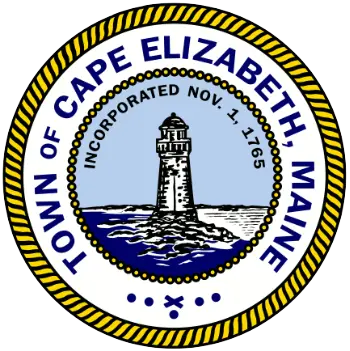Published on February 18, 2021

On Wednesday, February 10, 2021 the Town Council and School Board met with Jennifer Conners, a Principal of Runyon Kersteen Ouellette, to review the independent auditor’s annual report on the Town of Cape Elizabeth’s financial statements for the year ended on June 30, 2020. The audit was performed during the week of August 24, 2020. Due to circumstances pertaining to COVID-19, the majority of the audit was conducted remotely. Conners credited Finance Director John Quartararo and the school department Business Manager, Marcia Weeks for providing assistance by scanning and sending documents, “They were very helpful during a very unusual year and made the audit go easier than it would have otherwise.”
The reports were issued January 22, 2021 and received an unmodified opinion which indicates the reports to be materially correct in accordance with Generally Accepted Accounting Principles. In addition to the audit of financial statements, Runyon Kersteen Ouellette conducts testing under Government Auditing Standards. These standards require testing of internal controls as they relate to financial reporting. Under these testing standards, the report found “no material weaknesses, no significant deficiencies, and no compliance findings” — which Conners stated are “very good results.”
The General Fund Revenues came in under budget by approximately $184,000 as some items were lower than budgeted and others greater. Taxes were higher than budgeted with a variance of $151,799 due to un-budgeted supplemental taxes and higher than anticipated excise taxes. Licenses and permit revenues were higher than budgeted with a variance of $67,009 due to an increased demand for building permits. Investment income was higher than anticipated with a variance of $35,748 as the estimate for interest revenue was conservative and interest rates increased. There was a substantial decrease in budgeted revenue for charges for service with a variance of $475,135. This was due in large part to the programs at Community Services which were cancelled or delayed due to the pandemic.
Across the board, most of the General Fund Expenditures came in under budget by a total of $3.7 million as a result of the pandemic. General governmental expenditures were under budget with a variance of $182,664 as costs related to legal services and the election were lower than anticipated. Public works was under budget by a variance of $103,253 as increases in solid waste disposal fees were delayed. Facilities expenditures were under budget with a variance of $122,997 as costs connected to Community Services and the pool were lower than anticipated due to closures. Capital improvement expenditures were under budget with a variance of approximately $1 million as many projects were delayed and carried over to the next fiscal year. The single expenditure item that came in over budget was human services with a variance of $34,579. Quartararo explained that this too correlated with the pandemic’s impact on the community as more was spent on general assistance than budgeted.
The school department’s General Fund Revenues were also impacted by the pandemic, but in the end balanced out to be within 0.24 percent of the budget. The state education subsidy was the only revenue which came in higher than budgeted with a variance of $120,119. This was due to changes at the state level which were enacted after the school budget was passed in the local referendum. In other state funds, revenues were lower than anticipated with a combined variance of $46,170 due to lower than anticipated expense reimbursements. Revenues associated with school activities were also lower than budgeted by a variance of $10,970 due to school closures.
The school department’s General Fund Expenditures all came in under budget by a total of $1.2 million. Debt services matched what was budgeted. Regular instruction expenditures were under budget by a variance of $317,482 due to contingency amounts that were unused. In addition, as a result of remote and hybrid instruction, fewer teachers and educational technicians were required than budgeted which lowered salary and benefit costs. Special education was lower than budgeted with a variance of $171,571 due to school closures and lower health insurance costs due to decreased enrollment. Student and staff support expenditures were under budget with a variance of $202,976 as costs related to professional development, course reimbursement, and technology supplies were lower than budgeted. Transportation expenditures were under budget with a variance of $126,681 due to school closures. The fund balance will move forward to the next fiscal year to be used for educational purposes.
Click here to view reports and materials associated with the Annual Audit Year Ended June 30, 2020.

